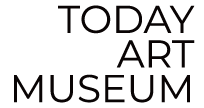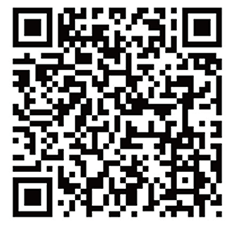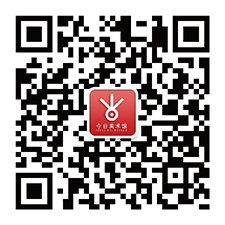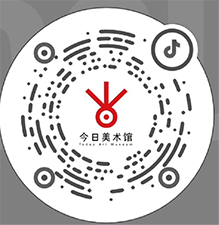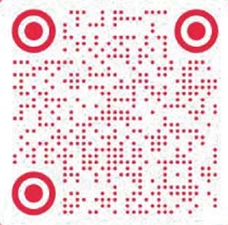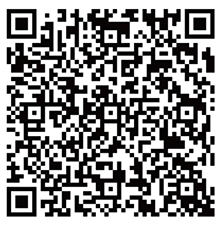Duration: 2013.05.04 -- 2013.05.13
Location: 2nd floor exhibition hall of building 2
Although Wang Peng secretly used himself as an Yves Klein-esque human paintbrush back in 1984, it was not until many years later that he realized what he had done was a work of art. At the time, he saw it as little more than a private protest against the oppressive atmosphere at the Affiliated High School of the Central Academy of Fine Art. This sort of abstract art had two main targets: first, the dominant status of realism in official and academic approaches to art; and second, the pervasive trend in the 85’ New Wave Movement of overlooking the language of art while making a big fuss about ideas. In this sense, Wang's attempt at abstract painting was indeed part of the ongoing discourse about purifying language. However, he was not attempting to form a complete personal style of language. His motivation came from his dissatisfaction with the notion of an established mainstream.
In fact, his recent abstract works had already begun to diverge from modernist ideas about painting. He dabbled with obliquity, splicing, false perspective, and ready-mades in order to break free from the narrow concept of paintings as two-dimensional quadrilaterals. In short, he pursued a fresh approach to concept and language itself, relentlessly abandoning the flash-in-the-pan trends of the so-called avant-garde. In this way, he quickly found himself on a path of diverse experimentation.
In addition to painting, Wang Peng dabbled in virtually every medium in the 1990s, including installation, performance, video, new media, and text. However, in his eyes, experimentation had nothing to do with theoretical artistic knowledge or the newness of the medium. Rather, the basis of experimentation was personal experience, emotion, inspiration, and impulse. "Wall" (1993) exemplified this approach; he used bricks to seal the entrance to the gallery for his own solo show. Today, "Wall" seems like a fierce critique of the gallery system, but at the time, it was a satirical counterattack against the government censorship system, which had previously shut down an exhibition at the same gallery.
Wang was also mocking the contemporary art scene, which had become excessively reliant on foreign buyers. The exhibition poster explicitly stated: "Not open to foreign friends or Hong Kong/Taiwan art dealers." Only a handful of friends from the art scene attended the opening, but the exhibition was nonetheless closed on its second day when the wall was demolished. The satirical concept earned a very real response that the artist had not expected or hoped for. To put it more precisely, Wang has no expectations at all. In Gate (2001), he locked spectators in a gallery and showed a video of the key being thrown away. The excited audience soon forced open the doors and departed like happy party guests.
Wang Peng emphasizes the experience of self within the artistic process. He takes self-experience as the starting point for his artistic practice and uses it as a means of avoiding entrapment within style and signification. He is particularly opposed to the ascendant trend of ritualization in contemporary performance art, including hyperbolic costumes and props as well as the incessant nude performances in front of foreigners with cameras. In contrast, he seeks to expose spectators to the tension of quiet transformations in space and time. Examples include his 1995 performance piece, Three Days, which took place during the renovation of a pavilion in the Forbidden City, and his work following his relocation to the United States, such as Inside & Outside (1996). Then there is Passing Through New York (1996) and Passing Through Beijing (2006), two performances separated by ten years and ten thousand kilometers. These works resist theater and emphasize the quotidian. In this way, Wang avoids reliance on sensory stimulation and does his best to remain unsentimental.
Many of Wang Peng's works, like the line of cotton thread that trailed him as he traversed crowds in Passing Through, are not eye-catching affairs. Nonetheless they are always disruptive. A line gives shape to individual existence, and this giving of shape allows the work of the artist to exert an influence on the commonly conceived everyday life or the philosophically conceived living world. Because some individual experiences cannot be conveyed by established means, a kind of creative shape-giving is necessary to construct a communal contemporary experience. In this sense, the individual is continuously molding the group.
Wang Peng demonstrates an enthusiastic openness toward all media, technologies, languages, and forms, but he does not blindly pursue technique. Often he employs the most basic of means to create an effective expression. One example is Call 13641041729 (2000), in which spectators could trigger a series of live interactive responses by calling the telephone number—and leave voicemail for the artist. www.ourdesktop.org (2001) was another interactive work in which the artist used internet technology to collect images of the desktops of visitors to the page. These works exemplify Wang's sensitivity to and enthusiasm for new media and technology, but more importantly, they hint at the transformations and possibilities that these innovations bring to the experience of existence.
By using personal experience as his basis for understanding and using technology, Wang Peng's artistic experiments inevitably offer critiques of history and reality. Any technique, medium, or form shares inseparable links with ideology and power, be they apparent or obfuscated. The individual will always encounter some abstract or concrete manifestation of that power. A transformation of established forms lies at the crux of many of Wang's works, such as Form of Reality (1994), Feeling North Korea (2005), Hall (2006), RMB 2008 (2008), and Tedou (2011). These works are formally straightforward and even carefree, but they pose direct and effective challenges to the seriousness of orthodox ideologies by identifying the forms that act as pillars of ideological discourse. Hall, for example, negates the political symbolism of the standard portraits of leaders from Marx to Mao by lining them up in a receding trapezoidal perspective.
Identity (2005) provides another example. The series of narrow photographs invokes an intense, anonymous feeling of oppression. A more recent work, Perspective (2013), contrasts satellite maps with head-on photographs of buildings, macroscopic cityscapes with scenes of demolition, fan shapes and round shapes, action and stasis. While the fascinating visual play between form and image seems to contain a variety of significances, Wang Peng's latent standpoint is singular: namely, form itself is a historical and cultural product of society and politics. Consequently, experiments in form, regardless of whether they are merely games, have innate historical, cultural, social, and political implications.
The question is, can the artist conduct authentic experiments? In other words, can he genuinely address new issues and experiences, and attempt new forms? More importantly, can he tap the elusive vein between form and concept, and draw forth original perceptual content? Sometimes, experiments attain a state of insignificance. This insignificance is an actively generated resistance of the interpretive inertia of two-dimensional, unidirectional artworks, and a rejection of the entire system of societal signification. Experimentation is always fleeing that which is mainstream, established, and goal-oriented in favor of divergence and enigma. Experimentation therefore lies not in any result but rather in a persistent condition. It generally expresses a kind of self-play with no ostensible significance. It contains many capabilities, yet does not care whether or not they are recognized or where that recognition comes from. This is precisely the experimentation evident in Wang Peng's work.
Today Art Museum, Building 4, Pingod Community, No.32 Baiziwan Road, Chaoyang District,Beijing. Tel: 010-58760600
Opening Hours:10 am - 6 pm: closed every Monday and during Spring Festival(2.13-2.23).
© 2005-2023 Today Art Museum
京ICP备13015009号-1
Tech Support:Today Digital Art Museum
